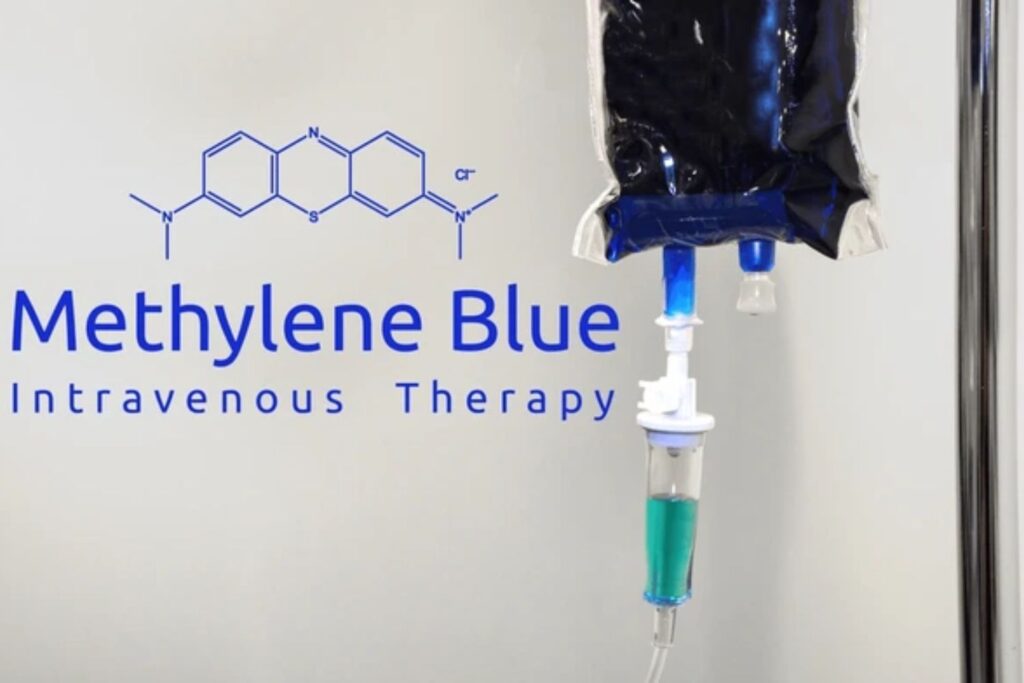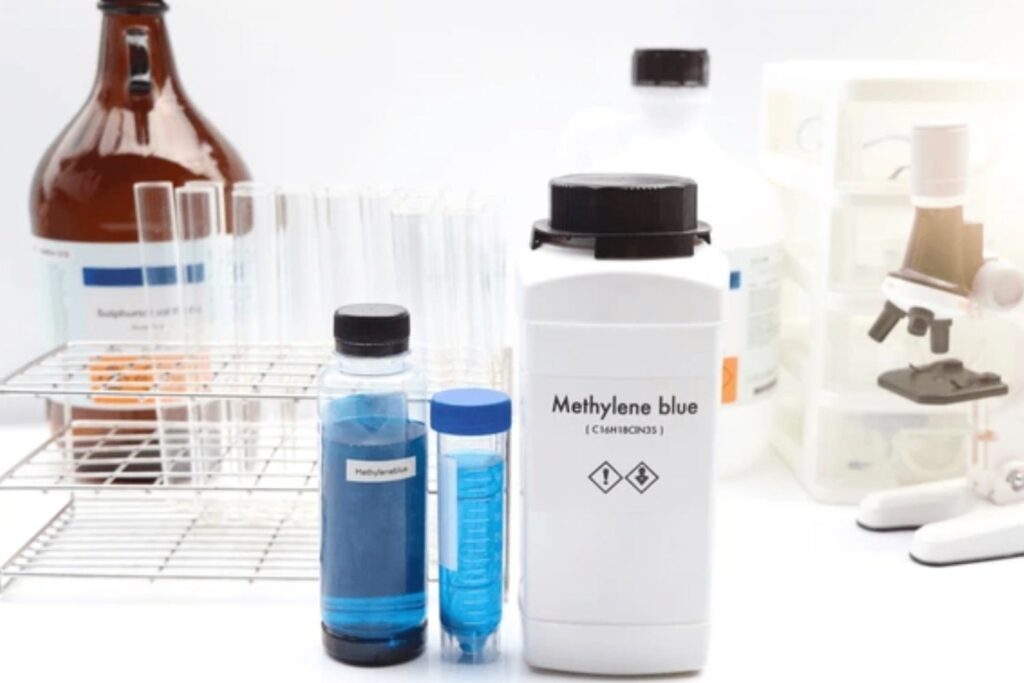
Methylene blue is a versatile organic compound with a distinct deep blue hue. Primarily recognized in medicine, it serves as a critical antidote for conditions like methemoglobinemia, reversing abnormal hemoglobin oxidation to restore oxygen – carrying capacity. Clinically, it also aids in malaria treatment (targeting drug – resistant strains) and guides surgical procedures as a tissue – staining agent. Beyond healthcare, it functions as a laboratory reagent for detecting biological processes (e.g., tracking cellular respiration) and finds use in industrial dyeing.
Today, researchers and clinicians are revisiting this molecule due to its broad pharmacological activity and potential in fields ranging from infectious disease to psychiatry and cancer. With the PatSnap Eureka AI Agent, experts can explore how methylene blue is being repurposed, track IP filings, evaluate clinical data, and analyze competitive landscapes across geographies and therapeutic areas.
What is Methylene Blue?
Methylene blue (MB), chemically known as methylthioninium chloride, is a phenothiazine derivative. It was the first synthetic antimalarial agent and has since gained FDA approval for the treatment of methemoglobinemia. It is also used off-label for conditions like septic shock, vasoplegia, and neurodegenerative diseases. Its deep blue color and redox properties give it unique capabilities across medical diagnostics and therapeutics.

Key Characteristics of Methylene Blue
- Chemical Class: Phenothiazine dye
- Molecular Formula: C₁₆H₁₈ClN₃S
- Solubility: Water-soluble; strongly colored
- Mechanisms: Redox cycling, nitric oxide inhibition, monoamine oxidase inhibition
- Administration Routes: Intravenous, oral, topical
Key Forms and Formulations
Methylene blue is available in several formulations, tailored to its wide range of applications:
| Formulation Type | Usage |
|---|---|
| IV solution | Methemoglobinemia, septic shock |
| Oral tablet/capsule | Cognitive disorders, off-label psychiatric uses |
| Topical solution | Surgical dye, skin antiseptic |
| Intrathecal | Rare neuroimaging and diagnostic applications |
Special formulations are also being studied for liposomal delivery and targeted cancer therapy.
Mechanism of Action
Methylene blue (MB), or methylthioninium chloride, acts through multiple mechanisms depending on dose, light exposure, and clinical context. For deeper insight into methylene blue’s diverse mechanisms—from mitochondrial modulation to redox signaling—PatSnap Eureka AI Agent provides access to global clinical trials, pharmacodynamic models, and chemical-pathway analytics.

1. Redox Cycling and Electron Transfer
MB cycles between oxidized (MB⁺) and reduced (leuco-MB) forms. This redox activity allows it to donate and accept electrons. It plays a role in photodynamic therapy and can inactivate viruses through electron transfer. MB’s electron-donating ability also leads to the formation of reactive oxygen species (ROS), especially in oxygen-rich environments.
2. Photosensitization
MB absorbs red light (around 660 nm) and transfers energy to oxygen, producing singlet oxygen. This reactive form damages lipids, proteins, and DNA. MB is effective in photodynamic therapy (PDT) for tumors and microbial infections. It accumulates in mitochondria and, when illuminated, promotes oxidative stress that leads to cell death.
3. Mitochondrial Targeting
MB readily enters mitochondria. It can inhibit Complex I of the electron transport chain, reducing ATP production and increasing ROS. MB also disrupts oxidative phosphorylation, uncouples mitochondrial respiration, and decreases cellular energy output. These actions enhance photodynamic damage and suppress cell survival in pathological tissues.
4. Nitric Oxide Pathway Inhibition
MB blocks nitric oxide synthase (NOS) and soluble guanylate cyclase (sGC). This reduces nitric oxide (NO) and cyclic GMP (cGMP) levels, causing vasoconstriction. MB also allows α-adrenergic pathways to dominate, enhancing vascular tone—useful in vasoplegic states.

5. Antimicrobial Effects
MB damages bacteria, viruses, and fungi by generating ROS. Under light, it disrupts microbial membranes and oxidizes vital biomolecules. MB also collapses microbial membrane potential, impairing growth and survival.
6. Neuroprotective and Cognitive Effects
At low doses, MB enhances mitochondrial function and energy metabolism. It inhibits monoamine oxidase A (MAO-A), increasing neurotransmitter availability. MB activates the Nrf2 pathway, boosting antioxidant defenses like glutathione and catalase. Functional MRI studies show that MB improves brain activity and memory performance.
7. Other Therapeutic Effects
MB blocks tau protein aggregation, relevant in Alzheimer’s disease. It also shows anti-inflammatory, antibacterial, antiviral, and neuropsychiatric activity. Its broad bioactivity continues to attract research across many therapeutic areas.
Clinical Uses of Methylene Blue
Methylene blue (MB), a phenothiazinium dye, serves both therapeutic and diagnostic roles. Its broad application comes from its redox activity, nitric oxide inhibition, and photosensitizing properties.
1. Therapeutic Applications
Methemoglobinemia:
MB is the first-line treatment. It reduces methemoglobin to hemoglobin by donating electrons via the NADPH-methemoglobin reductase system. The standard dose is 1–2 mg/kg IV over 5 minutes. Repeat if necessary.
Cyanide Poisoning:
MB converts hemoglobin into methemoglobin, which binds to cyanide. The result is cyanmethemoglobin—a harmless, excretable form.
Septic Shock:
Inhibits excess nitric oxide production by blocking inducible NO synthase. This raises vascular resistance and blood pressure. Common dose: 2 mg/kg over 20 minutes, followed by 0.5 mg/kg/hour infusion.
Vasoplegic Syndrome:
Used when vasopressors fail post-cardiopulmonary bypass. MB helps restore vascular tone.
Anaphylactic Shock:
MB blocks soluble guanylyl cyclase. This counters histamine-induced vasodilation.
Ifosfamide-Induced Neurotoxicity:
MB has shown mixed results in reducing neurotoxicity.
Malaria:
MB possesses antimalarial effects, often used in combination therapies.
UTI-Related Pain and Spasms:
Combined with other agents, MB helps relieve discomfort from UTIs.
Neuropsychiatric Disorders:
MB inhibits MAO-A, offering potential in mood disorders. It also shows antioxidant effects that may reduce toxic brain proteins—potentially delaying diseases like Alzheimer’s or Parkinson’s.
Anti-aging and Cognitive Boosting:
Some studies suggest MB may promote collagen and elastin, improve wound healing, and enhance memory. But more evidence is needed for safety and long-term use.

2. Diagnostic Applications
Surgery:
Used as a dye to visualize structures like parathyroid glands, bile ducts, ureters, and to detect tracheoesophageal fistulas or aspiration.
Fistula Detection:
Helps identify abnormal connections between internal cavities.
Atrial Line Verification:
Used at the bedside in infants after cardiac surgery to confirm atrial line placement.
Sentinel Lymph Node Mapping:
Traces lymphatic vessels during surgeries, especially for cancer.
Photodynamic Therapy (PDT):
MB absorbs light and generates reactive oxygen species. This destroys targeted cells—used for cancer and infection treatment.
3. Other Applications
Antimicrobial Coatings:
MB can be embedded in surfaces. Under light, it produces ROS to kill microbes.
Blood Decontamination and Medical Materials:
MB derivatives may be used in medical textiles, coatings, and devices for antimicrobial protection.
Certainly! Here’s a concise, well-structured section titled:
Potential Health Benefits of Methylene Blue
Methylene blue (MB), originally developed as a textile dye, has since gained recognition for its wide-ranging health applications. Its unique biochemical properties contribute to both established medical treatments and emerging therapeutic possibilities.
1. Enhanced Mitochondrial Function
MB improves cellular respiration by shuttling electrons within the mitochondrial electron transport chain. At low doses, it bypasses dysfunctional complex I, increasing ATP production and reducing oxidative stress—making it promising for neurodegenerative disorders like Alzheimer’s and Parkinson’s.
2. Neuroprotection and Cognitive Support
By inhibiting monoamine oxidase A (MAO-A) and reducing reactive oxygen species (ROS), MB supports neurotransmitter balance and reduces cellular damage. Early studies show improved short-term memory and attention after low-dose administration.
3. Antioxidant Effects
MB activates the Nrf2 pathway, a master regulator of antioxidant defense. This leads to increased expression of cytoprotective enzymes like superoxide dismutase, catalase, and glutathione peroxidase, offering protection against oxidative damage in various tissues.
4. Anti-Aging Potential
Preliminary research suggests MB may delay signs of aging. It supports mitochondrial efficiency, promotes collagen and elastin production in skin cells, and accelerates wound healing—making it a potential ingredient in dermatological and anti-aging therapies.
5. Antimicrobial and Antiviral Properties
MB generates ROS under light exposure, disrupting bacterial membranes and nucleic acids. It also shows inactivation capabilities against certain viruses, including RNA viruses, which has led to its investigation in blood sterilization and infection control.
6. Cardiovascular and Hemodynamic Stability
MB inhibits nitric oxide synthase and soluble guanylate cyclase, reducing excessive vasodilation. This makes it useful in managing vasoplegic syndrome, septic shock, and anaphylaxis, where conventional vasopressors may fail.
7. Mood and Psychiatric Support
Its MAO-A inhibition and mitochondrial support contribute to research into MB’s antidepressant and anxiolytic effects. Clinical trials have explored its use in mood disorders, depression, and post-traumatic stress disorder (PTSD).
Dosage and Administration
| Indication | Typical Dose | Route |
|---|---|---|
| Methemoglobinemia | 1–2 mg/kg IV over 5 mins | IV |
| Vasoplegia | 1.5–2 mg/kg bolus, then infusion | IV |
| Cognitive/neuropsychiatric (off-label) | 15–60 mg/day | Oral |
Note: Dosage depends on condition, patient status, and comorbidities. MAOI activity may contraindicate use with SSRIs due to serotonin syndrome risk.
Side Effects and Safety
Most common adverse effects include:
- Blue or green discoloration of urine and skin
- Nausea, vomiting, dizziness
- Confusion or serotonin syndrome (especially if combined with SSRIs)
- Hemolysis in patients with G6PD deficiency (contraindicated)
It is generally well tolerated at low doses, but IV administration requires careful dosing due to risks of neurotoxicity and cardiac events at higher levels.
Methylene Blue vs. Other Agents
| Condition | Methylene Blue | Alternatives |
|---|---|---|
| Methemoglobinemia | First-line | Hyperbaric oxygen (severe cases) |
| Vasoplegia | Effective adjunct | Norepinephrine, vasopressin |
| Cognitive disorders | Investigational | Donepezil, memantine |
| Surgical staining | Widely used | Indigo carmine, isosulfan blue |
MB offers both diagnostic and therapeutic utility, a dual function not common in most comparators.
Conclusion
Methylene blue is a classic example of a compound whose value continues to expand well beyond its original indication. From treating rare blood disorders to supporting mitochondrial function, its versatility and affordability make it a subject of renewed scientific and clinical interest.
With modern analytics like PatSnap Eureka AI Agent, clinicians, R&D professionals, and regulatory teams can access an end-to-end view of methylene blue’s pharmacology, clinical trial activity, IP strength, and innovation trajectories across industries.
FAQs
Generally safe when used as directed (e.g., medical doses for methemoglobinemia). But risks exist: improper use (high doses, unregulated supplements) may cause nausea, serotonin syndrome (with certain drugs), or nerve damage.
Not typically recommended long – term. Medical uses are short – term (e.g., acute conditions). Chronic daily use risks toxicity (e.g., serotonin syndrome, organ strain) and lacks mainstream medical approval for “daily wellness” claims.
Debate centers on:
Unregulated promotion as a “nootropic”/anti – aging supplement (lacking robust evidence).
Risks of interactions (e.g., with antidepressants) and side effects vs. exaggerated benefits.
Blurred lines between approved medical use and unproven wellness hype.
In limited studies, it may enhance mitochondrial function (boosting energy) and modulate neurotransmitters. But claims like “cognitive supercharge” lack strong clinical backing. Used medically for conditions like ifosfamide – induced encephalopathy, not as a routine brain “booster.”
To get more detailed scientific explanations of the methylene blue, try PatSnap Eureka AI Agent.

